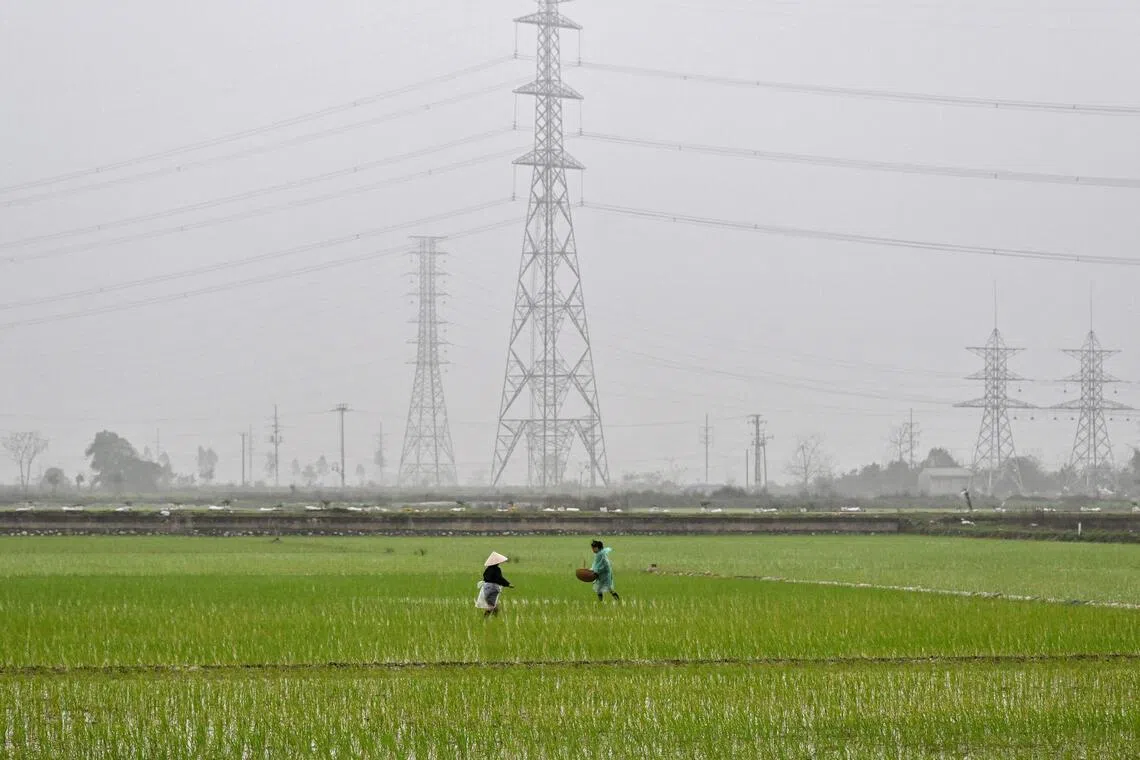Food safety gaps put Vietnam shoppers at risk
Sign up now: Get ST's newsletters delivered to your inbox

Experts cautioned that violations not only threaten public health but also undermine consumer trust and put legitimate businesses at a disadvantage
PHOTO: AFP
Follow topic:
HANOI – Rotten labels and risky residues are slipping onto plates across the country as counterfeit products, banned chemicals and goods of unclear origin continue to reach school canteens, markets and even supermarkets, experts warned.
Speaking at a workshop on food safety in farm produce in Hanoi on Sept 23, specialists highlighed major gaps in production, distribution and oversight. They cautioned that these violations not only threaten public health but also undermine consumer trust and put legitimate businesses at a disadvantage.
According to Mr Nguyen Quy Duong, deputy director of the Department of Crop Production and Plant Protection under the Ministry of Agriculture and Environment, Vietnam has around 10 million farming households, cultivating 1.15 million ha of vegetables and 1.3 million ha of fruit. Yet, the area meeting safe farming standards remains limited.
“Safe produce must start from production,” Mr Duong said. “Although policies to promote VietGap have been in place since 2008, the certified area is still too small.
“Vegetables, which are consumed daily, have the lowest compliance rate, while fruits are doing better but most are grown for export.”
A 2024 survey showed that less than 1 per cent of Vietnam’s vegetable acreage had VietGap certification. For fruit, 76,000ha were certified and for tea 5,200ha. Even when including GlobalGap and other standards, the total area reached only 440,000ha, a modest figure compared with demand.
Vietnam Fruit and Vegetable Association deputy secretary-general Nguyen Van Muoi said VietGap must be regarded as the minimum requirement for food safety. Yet only 5 per cent to 6 per cent of vegetables meet this standard.
“When such a basic requirement is unmet, the market is left unregulated and consumers bear the consequences,” he said.
Mr Muoi stressed the need for stricter pesticide controls, noting that pre-harvest intervals can last weeks or even months and that non-compliance poses serious risks to consumer health.
Vietnam has more than 8,200 markets, nearly 300 trade centres and about 1,300 supermarkets. Large suppliers to supermarkets usually meet food safety rules, but small traders at markets mostly rely on verbal commitments with limited traceability. Oversight is even weaker at scattered stalls and small shops.
To address these challenges, the Ministry of Industry and Trade is drafting a new circular, expected to take effect in May 2026. It will introduce a “digital passport” for each product, designed to strengthen traceability, improve transparency and hold producers accountable.
Experts agreed that restoring consumer trust requires coordinated action across the entire supply chain. They called for stricter chemical management, more centralised distribution and stronger consumer awareness.
As deputy editor-in-chief of Tien Phong (Vanguard) newspaper, Mr Le Minh Toan said Vietnamese farm produce has earned recognition abroad, from dragon fruit and durian to shrimp and fish now sold in Europe, the US, Japan and China.
He noted that despite success abroad, Vietnam’s domestic market of more than 100 million consumers still faces major challenges. VIETNAM NEWS/ASIA NEWS NETWORK

